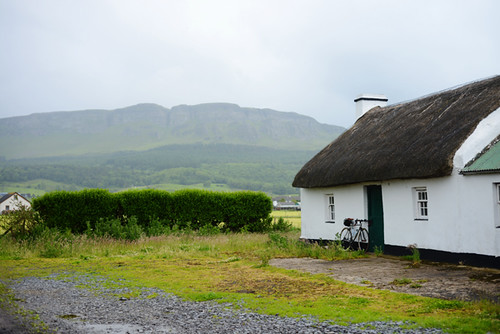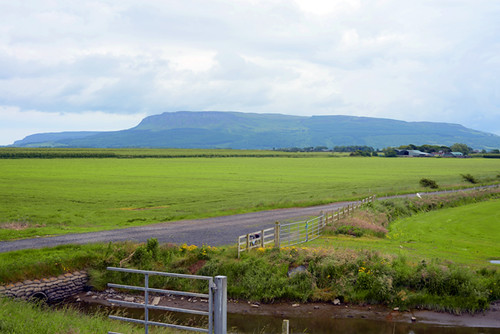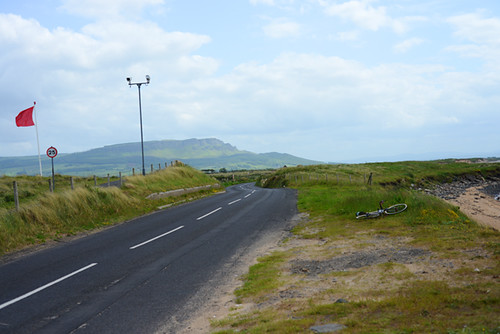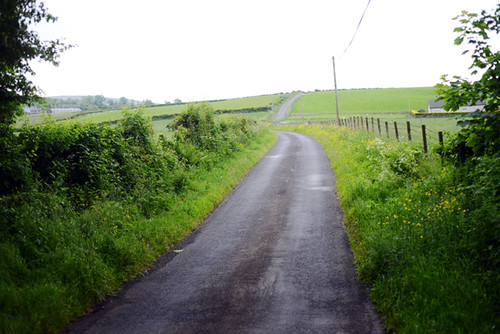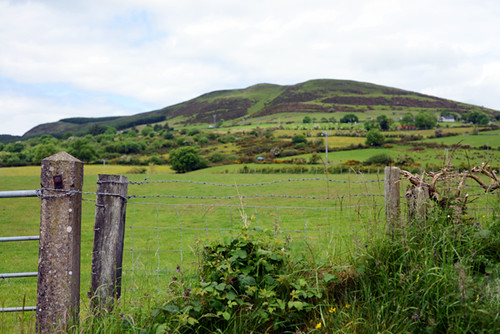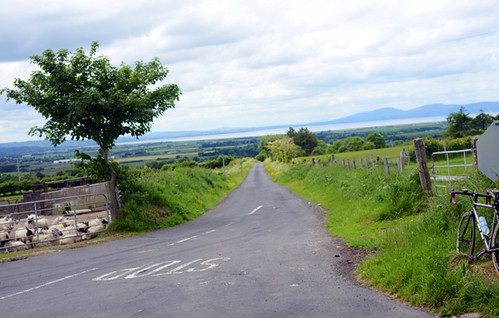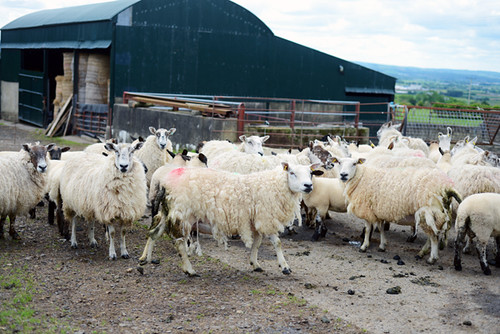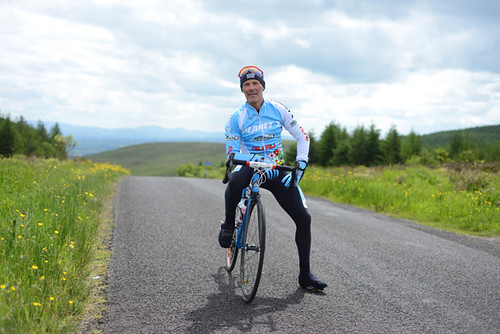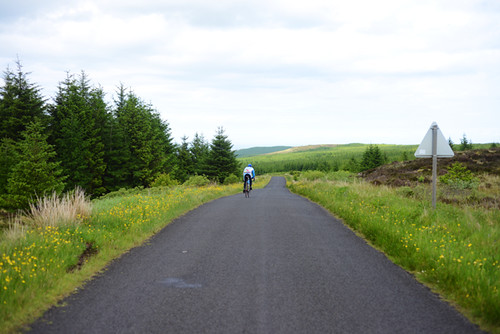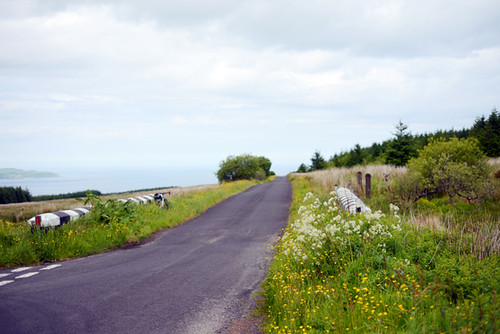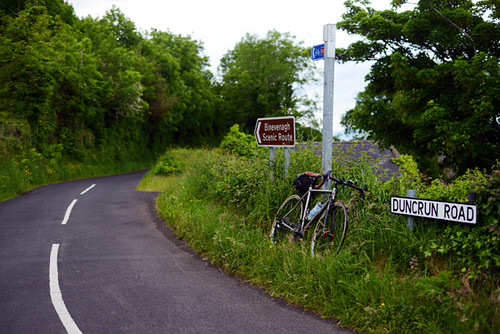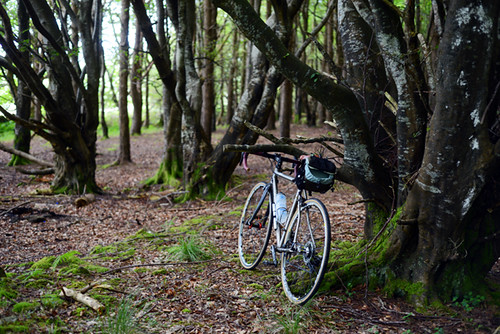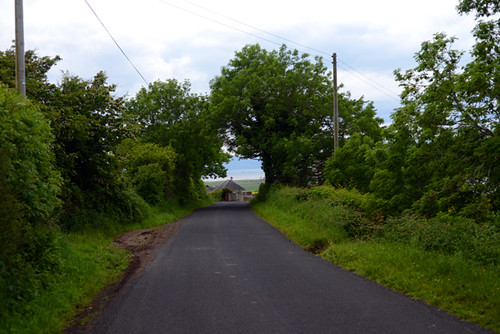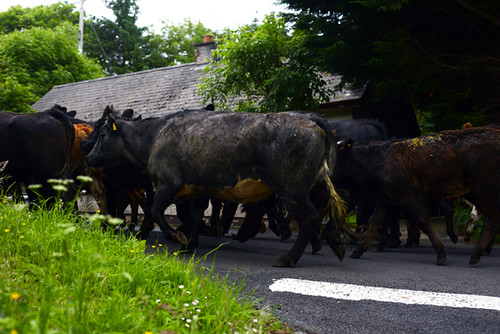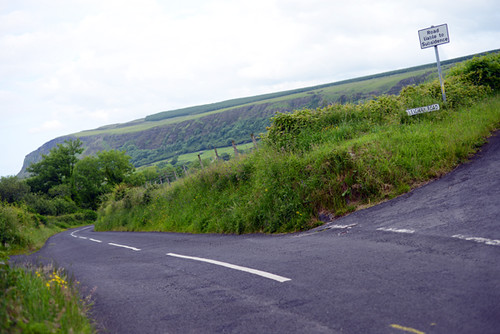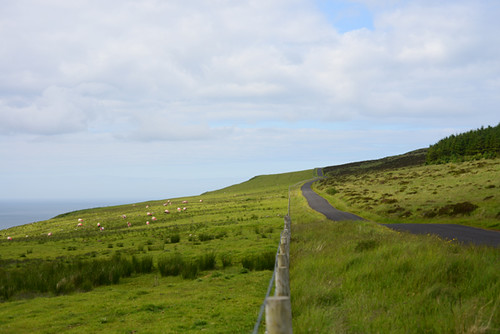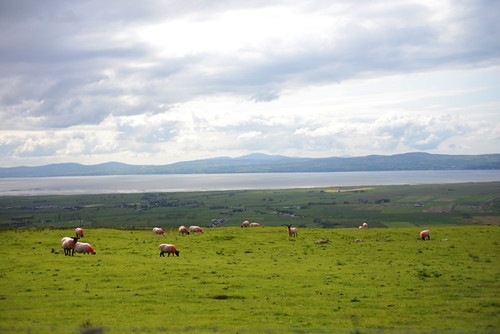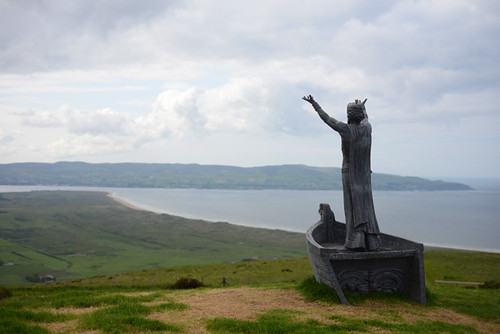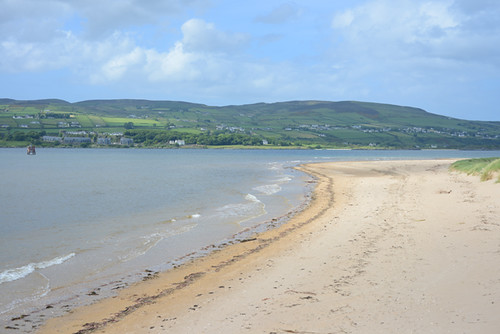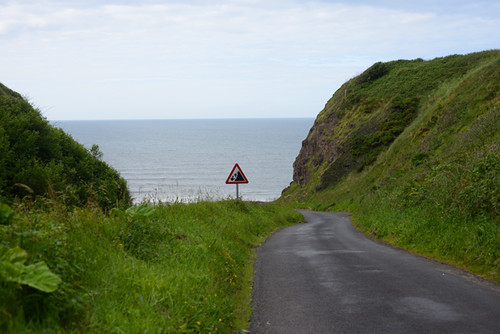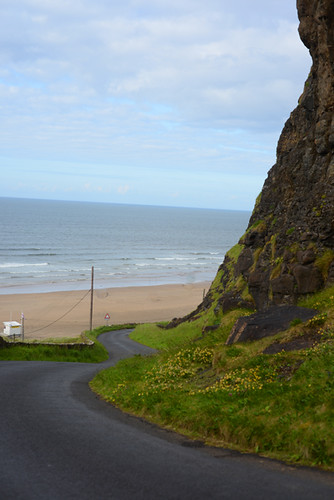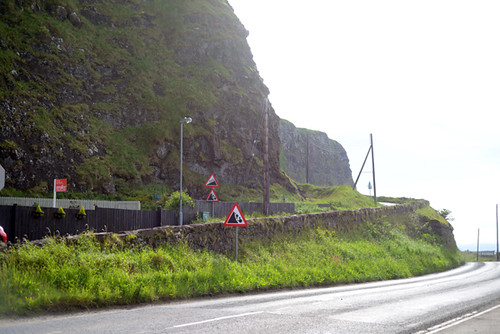A wonderful article was published in the January 1986 issue of "Pennsylvania Mennonite Heritage" titled "Hans Jacob Brubacher, Fraktur Artist" which was written by David R. Johnson. I received the article in 1999 from a distant cousin, Margery Bebow, who is related through both the Brubaker and Foster lines. She had received the article from another distant cousin, Ken Fawley, who happens to be married to my 1st cousin Caroline Conrad.
The seven-page article presented what was known about the three generations of men named Hans Jacob Brubacher who lived in what was then Martic Township (now Providence Township) in Lancaster County, Pennsylvania from about 1730 through 1817. Information from Mr. Johnson's research in land and estate records combined with that from Phares Brubaker Gibble's "History and Genealogy of the Brubaker, Brubacher, Brewbaker family in America" provides a good summary of the family, though with at least one error, which may be the subject of a future post.
Hans Jacob Brubaker III is my 5th great-grandfather. His father, Hans Jacob II - the Fraktur Artist, is my 6th great-grandfather. His father, Hans Jacob I, is my 7th great-grandfather.
In his will (dated June 24, 1754 and recorded in Lancaster County Will Book 1 pages 89-90) Hans Jacob Brubacher identified himself as a weaver. Proved on April 17, 1755 the will stated that he owned real estate but did not provide a location or description of the land.
On page 11, the author of the Fraktur Artist article cites several passages from "History of Lancaster County, Pennsylvania, with Biographical Sketches of Many of Its Pioneers and Prominent Men", by Franklin Ellis and Samuel Evans (Philadelphia: Evens & Peck, 1883), p. 868:
The elder Hans Jacob acquired 124 acres of land through agents John Herr and Martin Kendig in 1730, "about one mile due southwest from the present village of New Providence, near Big Beaver Creek."
The author continues by saying (emphasis added):
A more garbled account by the same authors gives similar information in a history of the town of New Providence: "A man by the name of Powpather had a large tract of land close by, if not altogether in the limits of the present village. His land extended westward. When he divided his land among his children he changed the name on their deeds to 'Brubaker.'"
Mr. Johnson goes on to say:
The location of the first Jacob Brubacher's land is still uncertain. The most probable tract is the one consisting of 318-plus acres, for which Henry Herr obtained warrant, survey, and patent in 1762 and which was located one mile or more south-southwest of the village of New Providence.
In the footnote for the above statement, citing Patent AA-3-296 and Survey C-76-209, the author states: "As yet no patent, survey, or deed for the elder Jacob Brubacher has surfaced."
Referring to the will and the estate of the elder Hans Jacob, Mr. Johnson states:
"The deceased owned about 150 acres in what was then Martic Township. Because his personal estate was insufficient to pay all expenses, a sale of 60 acres of his land was contemplated, but the family later agreed to sell the whole tract. Jacob Graeff was the highest bidder of £114 at the sale which took place on April 27, 1757, but the court refused to confirm the sale when Thomas Smith, a local resident, appeared and claimed that others present at the bidding did not have time to submit their bids. On December 31, 1757, another sale was held on the premises. This time Henry Herr purchased the farm for £130 5s. and agreed to take responsibility for the widow's bequeathments. When the estate was settled, a final balance was equally divided among the four inheriting children, each of whom received £17 10s. 9d. Henry Herr may have been a close friend or relative; the year before the sale, minor child Abraham Brubacher chose him as guardian."
While looking for county and state resources available online for Pennsylvania in preparation for on-site research in the areas where several ancestors lived, I "discovered" the awesome website of the Pennsylvania Historical and Museum Commission, particularly the Land Records Portal associated with the State Archives.
Available online through the above mentioned Land Records Portal are digital images of land warrants, surveys, patents, warrantee township maps, and other associated state-level land records from the 1680s to the present day. They DO NOT have the deed books for transactions "transferring land between private citizens that occurred either after or during the patenting process." Those records are maintained at the office of the Recorder of Deeds for the appropriate county.
Some image sets, such as the warrantee township maps, do not include coverage for all counties or even all townships within a county. It does get a little confusing, since there were so many county boundary changes, and it takes time to figure out what you're looking for and then even determining what you are looking at. But it is well worth the time it takes.
Sometimes a warrant was issued but the patent wasn't filed until many years later. Such was the case of the land of Hans Jacob Brubacher II. One warrant for his land was dated July 20, 1748 and another on March 9, 1759 but the patents were not issued until February 23, 1813.
I first looked at the Warrantee Township Maps. There are very few available for the counties where my ancestors settled, but there just happened to be one for Providence Township, Lancaster County. These maps show all original land purchases from the Proprietors or the Commonwealth that were made within the boundaries of
present-day townships. The warrants and surveys will generally be found in the county at the time they were issued. Like I said, it does get a bit confusing!

The maps are large pdf files. This one was 7.5mb and I imagine the original was several feet wide. You have to enlarge the map considerably to be able to read the text. Then you look through the names on the map to find your person(s) of interest. The numbers in the upper left of each entry indicate the location on the map. I was looking for Jacob Brubaker but was pleasantly surprised to find the name of Thomas Stoneroad also.
According to the Phares Gibble book (page 76) Jacob Brubaker III married Elizabeth Stoneroad. Records show that the surname was originally Steinweg or Steinweeg. The surnames seem to have been used interchangeably for a period of time in the 1780s through the early 1800s. Apparently "stein" is a German and Norwegian word meaning "stone" or "rock" and "weg" means way or road. Thus Stoneroad is the anglicized equivalent of Steinweg.
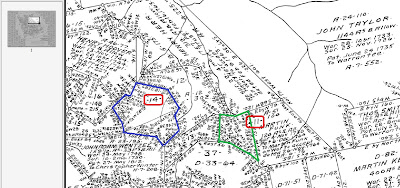
Above is a very small portion of the Warrantee Township Map for Providence Township (double-click the image to view a larger version). The area outlined in blue is the location of the land of Jacob Brubaker II, which was inherited by Jacob III. The area outlined in green is the tract of Thomas Stoneroad.
Below is survey C-16-89 for Jacob Brubaker (II). The text reads:
A Drought of a Tract of Land Situate in Martick Township in the County of Lancaster Containing in the whole 107 as & 166 pr & the usual allowance of Six P Cent for the Roads &c 72 as & 76 pr & the usual Allowance Surveyed in pursuance of a warrant dated the 8th of March AD 1759* Granted unto Jacob Brubacker and 35 as & 90 pr and the usual Allowance, being part of a Larger Tract Containing -
Surveyed in pursuance of a Warrant dated the 8th of March AD 1759 Granted unto Thomas Smith &c Surveyed the above tract of Land for Abraham Brubaker the 11th day of January AD 1810.
Jacob Hibshman D.S.
* Brubacker's Warrt is Dated 20 July 1748

Survey C-16-89 for Jacob Brubaker.
I also looked up the survey for Thomas Stoneroad. The surname is unique enough that I've been gathering whatever information I can find on anyone with that surname.

Survey C-201-16 for Thomas Stoneroad.
His tract of land is 42 acres. But what I found very interesting is that his name is associated with the tract labeled A-51-104, which is the survey number. So, yeah, I grabbed that one too.

The original survey A-51-104 is for Jacob Prowpather!
Yes! This is the record that had previously not been found! And I wouldn't have found it either if I hadn't looked at the survey for Thomas Stoneroad. Luckily, my friend Cindy was at home with me at the time and I was able to share this discovery with her, though I'm sure I didn't explain it all very well. It was just nice to be able to talk it over with someone else who "understands" these things!
The document text reads:
Jacob Prowpather 124 acres & the allowance of Six pcent situate on a Branch of Beaver Creek in the County of Lancaster Surveyd to him in right of Martin Kendrick & John Heer [sic: Herr], the 4th of November 1730.
Jno. Taylor.
Warrt. 22 November 1717.
Returned &ca. Novr. 29th 1764 for the use of Martin Funk in pursuance of a Warrt. dated the 26th day of Novr. 1764 now Situate in Martick Township in the County of Lancaster.
No Warrant or Patent was found for this land in Lancaster County or Chester County in the name of Jacob Prowpather or Jacob Brubaker or other variations of the surname. (Lancaster County was a part of Chester County until 1729.) I didn't really expect to find either record since the tract was "in right of" Kendrick and Heer.
Records at the county level will have to be checked to find the deeds for when Jacob sold the land and for Thomas Stoneroad's purchase of the land.

Looking at the Warrantee map once again, we see that the land identified as survey A-51-104 (outlined in red) belonged to Martin Funk and is the same property originally owned by Jacob Prowpather, aka Jacob Brubaker (the 1st) from 1730 until his death in 1755. The land that Thomas Stoneroad obtained in 1804 is outlined in green, and that of Jacob II (and III), which they owned from 1748 to about 1817, is outlined in blue.
In his article, David R. Johnson included two diagrams of the property of Jacob II, one of which placed the property in a present-day (1986) map. Using his drawings and Google Maps, I was able to locate the Brubaker tracts on a road map and on a satellite view.


That dark line running from the left-center and curving down the lower-right of the image is the Enola Low Grade Trail, which opened last year. I may just have to check that out (amongst other things) on my way through Pennsylvania this coming week!
I haven't gotten through the entire list of Pennsylvania ancestors yet, but I have found warrants, surveys, and patents for the lands of 12 of them! All in all, the last couple of days have been very productive...



 I'm sitting on what I think is part of an old wagon for hauling out the logs that were cut in this little canyon all those years ago.
I'm sitting on what I think is part of an old wagon for hauling out the logs that were cut in this little canyon all those years ago.








 Upon entering Kootenay National Park at Radium Hot Springs, the sun was shining once again. This view of the Kootenay Valley is about half-way through the park. (Please, double-click on the images to view a larger version.)
Upon entering Kootenay National Park at Radium Hot Springs, the sun was shining once again. This view of the Kootenay Valley is about half-way through the park. (Please, double-click on the images to view a larger version.) This is half of Two Jack Lake, near Banff, taken between rain showers. I think it is the west half but my sense of direction got totally confused with the drive up there! At Two Jack Lake there is a lakeside campground and then there is the other one. The former was full but there was plenty of sites available at the other one, which is where I spent my second night in Canada.
This is half of Two Jack Lake, near Banff, taken between rain showers. I think it is the west half but my sense of direction got totally confused with the drive up there! At Two Jack Lake there is a lakeside campground and then there is the other one. The former was full but there was plenty of sites available at the other one, which is where I spent my second night in Canada.

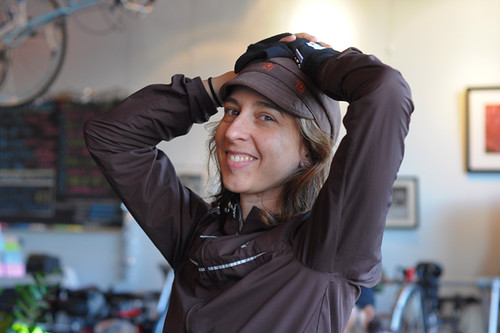



 Coming up Zig Zag (photo by Steve Machuga)
Coming up Zig Zag (photo by Steve Machuga) Steve leading up Ray Auld
Steve leading up Ray Auld Show off
Show off






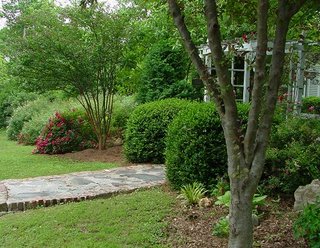
 That afternoon there were several visitors in the area where I was staying...
That afternoon there were several visitors in the area where I was staying...




 Built on the side of a hill, the walls of the Sublett home are all that remain. The back wall had no windows since it faced the hillside.
Built on the side of a hill, the walls of the Sublett home are all that remain. The back wall had no windows since it faced the hillside. The remaining walls of the Sublett home.
The remaining walls of the Sublett home. The view from the front of the Sublett home. As beautiful as it can be sometimes, I'm not sure it would be worth it to me to live in such a place. For some it obviously is, but I'm not one of them!
The view from the front of the Sublett home. As beautiful as it can be sometimes, I'm not sure it would be worth it to me to live in such a place. For some it obviously is, but I'm not one of them! The Dorgan house was built on a mesa, which overlooked the Sublett home.
The Dorgan house was built on a mesa, which overlooked the Sublett home. The fireplace in the Dorgan home, made of stone, petrified wood, and adobe bricks, dwarfs the remains of the house. It stands about 10 feet tall.
The fireplace in the Dorgan home, made of stone, petrified wood, and adobe bricks, dwarfs the remains of the house. It stands about 10 feet tall. A detail of the adobe walls of the remains of the Dorgan home.
A detail of the adobe walls of the remains of the Dorgan home. The ruins of the Sublett home, in the center of the picture, appears insignificant in context of its surroundings. The mountains behind the home are in Mexican territory. The Rio Grande flows at the base of those mountains, several miles from the Sublett home.
The ruins of the Sublett home, in the center of the picture, appears insignificant in context of its surroundings. The mountains behind the home are in Mexican territory. The Rio Grande flows at the base of those mountains, several miles from the Sublett home. The Subletts and Dorgans would have witnessed many such mornings as this. In their struggles to make a living, I wonder if they saw the beauty around them.
The Subletts and Dorgans would have witnessed many such mornings as this. In their struggles to make a living, I wonder if they saw the beauty around them.